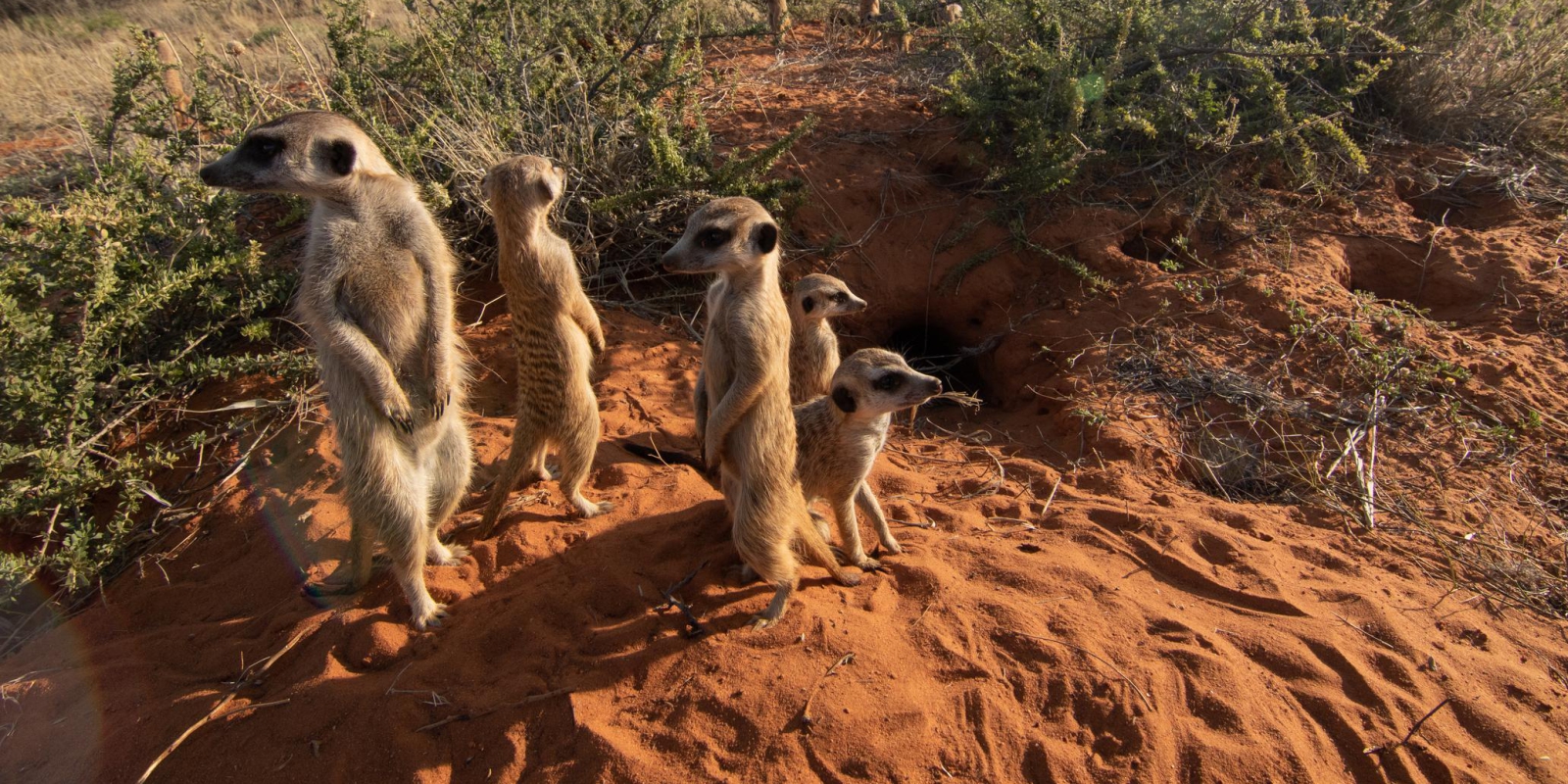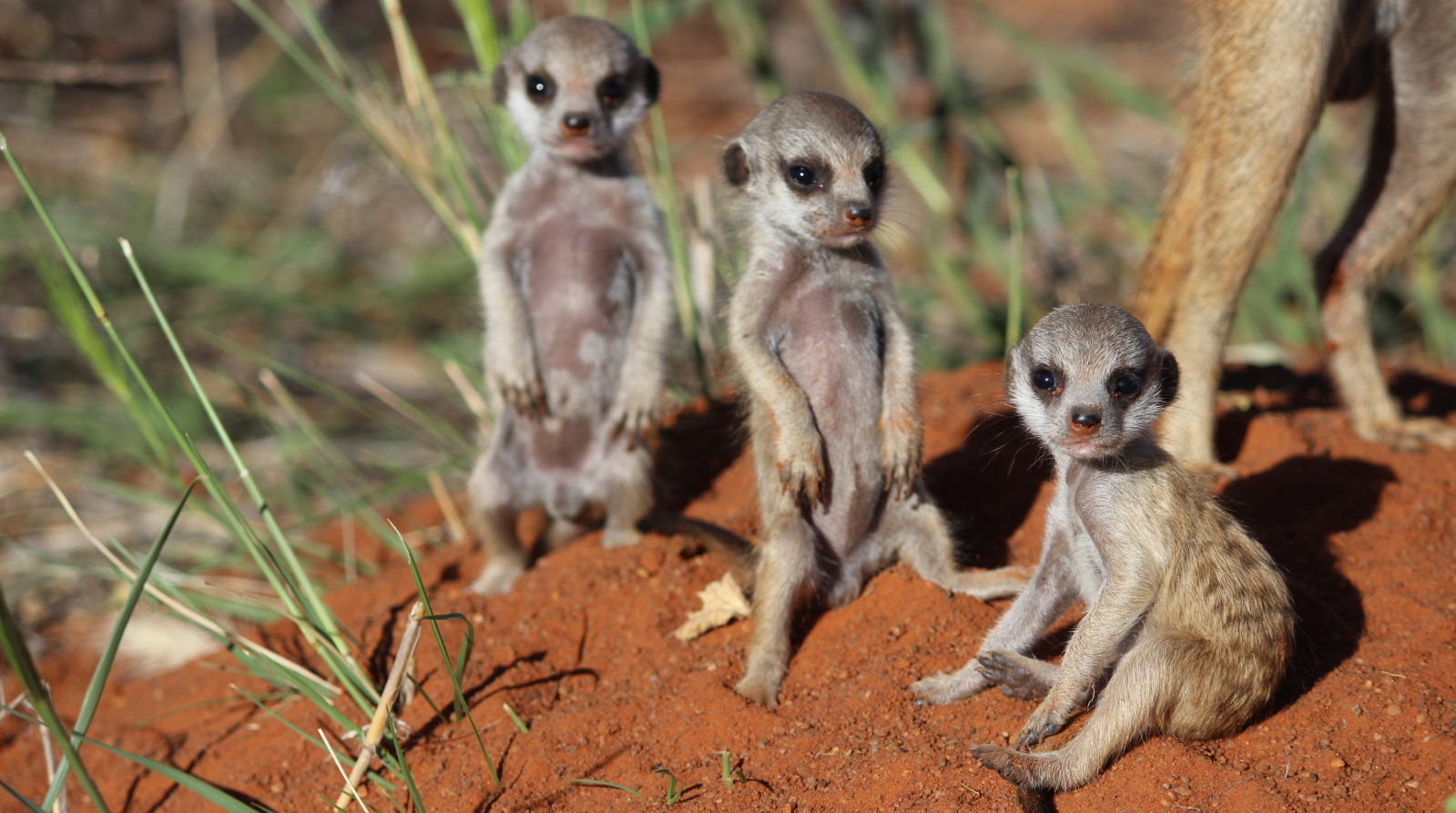Monitoring the Mokala meerkat gang
Alpha female meerkat behaviour
Meerkat, as a species, have a matriarchal hierarchy. In the pecking order of meerkats, there is an alpha female and an alpha male, and there is also a beta female but normally only the alpha female has pups. If a beta female within the gang of meerkats falls pregnant and has pups, she would either be kicked out or her pups would be killed. This would be done by the alpha female, as she would know the beta female’s litter is not her own. The unwanted pups are usually eaten by the alpha female to prevent them from attracting predators and threatening the gang’s survival.

Getting to know the Mokala meerkats
I monitored the Mokala group of meerkats this summer, which was a large gang of 17 adults even before I realised that the alpha and beta females were both pregnant. I thought that the beta’s pups would be killed, especially since there were already so many mouths to feed. Meerkats play an important ecological role managing populations of insects, their main diet. An adult meerkat consumes on average between 800 and 900 grams of insects daily. Therefore, a gang of 17 meerkats could easily consume up to 17 kilograms of insects in a day. It therefore seemed likely that the beta female’s pups would be eliminated to keep numbers down.
When I noticed that the Mokala meerkats were sticking to one burrow system – a gang usually move a lot between burrow systems, based on food availability – I assumed that the alpha female had given birth. Pups usually only emerge from the burrow system when they are three weeks old, as they are born blind, without fur, and need time to develop.

Meerkat babysitters and sentinels
After taking a two-week break from monitoring, I went out one warm Kalahari afternoon unsure of what I’d find at the burrow site. I noticed that two adults were stationed just outside the entrance as designated ‘babysitters’. Within the gang, there are usually two or three babysitters that guard the burrow each day, taking it in turns so that on their off-duty days they are free to forage.
There is always a sentinel scouting for danger, often climbing a tree to get a better view. This position is switched often, every 30 to 40 minutes, with another sentinel taking over the lookout role. Babysitters and sentinels give the rest of the group the freedom to move away from the burrow entrance to forage.

Spotting the new meerkat pups
Guide Nic Coleman, who was visiting the Mokala group with his guests that morning, called me over after spotting four pups at the burrow entrance. I immediately assumed that they comprised one litter and that the others had been killed.
The next morning I went out later than usual, as it had been raining. Meerkats like to warm up in the morning sun, and stay in their burrows if it is raining or cold. The sun came out, luring the meerkats out from their hiding place to warm up and start foraging. Once again, I noticed pups peeking out at the opening of the burrow, but this time there were seven instead of four. I stayed with them for a while, monitoring to see if there were more than seven.

Later that day, during my afternoon monitoring session, I was amazed to see 10 pups at the burrow opening. Some of the pups adventured beyond the opening, and seemed stronger and bigger than the others. Were they from a different litter?
Five days later, I could report that all 10 pups were well developed and alive, running around and keeping their babysitters busy. The Mokala gang had grown from 17 to 27, and both the alpha and beta females were still part of the group – an unusual situation, but a very welcome sight.
Images by Micole Monteiro.

